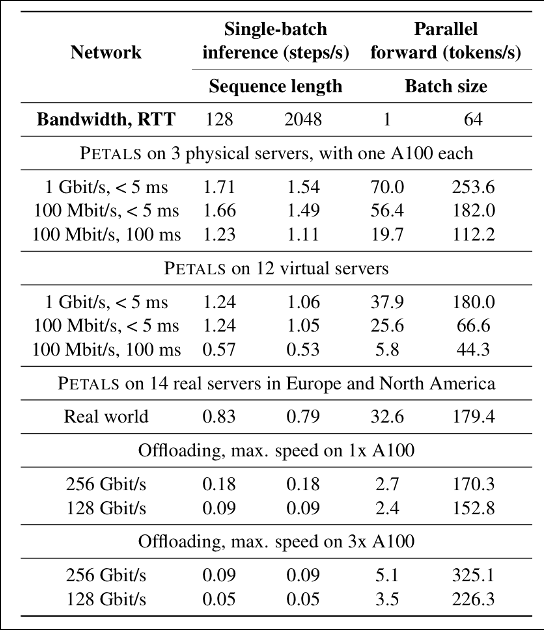cross-posted from: https://lemmy.world/post/1535820
I'd like to share with you Petals: decentralized inference and finetuning of large language models
- https://petals.ml/
- https://research.yandex.com/blog/petals-decentralized-inference-and-finetuning-of-large-language-models
Run large language models at home, BitTorrent‑style
Run large language models like LLaMA-65B, BLOOM-176B, or BLOOMZ-176B collaboratively — you load a small part of the model, then team up with people serving the other parts to run inference or fine-tuning. Single-batch inference runs at 5-6 steps/sec for LLaMA-65B and ≈ 1 step/sec for BLOOM — up to 10x faster than offloading, enough for chatbots and other interactive apps. Parallel inference reaches hundreds of tokens/sec. Beyond classic language model APIs — you can employ any fine-tuning and sampling methods, execute custom paths through the model, or see its hidden states. You get the comforts of an API with the flexibility of PyTorch.
Overview of the Approach
On a surface level, Petals works as a decentralized pipeline designed for fast inference of neural networks. It splits any given model into several blocks (or layers) that are hosted on different servers. These servers can be spread out across continents, and anybody can connect their own GPU! In turn, users can connect to this network as a client and apply the model to their data. When a client sends a request to the network, it is routed through a chain of servers that is built to minimize the total forward pass time. Upon joining the system, each server selects the most optimal set of blocks based on the current bottlenecks within the pipeline. Below, you can see an illustration of Petals for several servers and clients running different inputs for the model.
Benchmarks
We compare the performance of Petals with offloading, as it is the most popular method for using 100B+ models on local hardware. We test both single-batch inference as an interactive setting and parallel forward pass throughput for a batch processing scenario. Our experiments are run on BLOOM-176B and cover various network conditions, from a few high-speed nodes to real-world Internet links. As you can see from the table below, Petals is predictably slower than offloading in terms of throughput but 3–25x faster in terms of latency when compared in a realistic setup. This means that inference (and sometimes even finetuning) is much faster with Petals, despite the fact that we are using a distributed model instead of a local one.
Conclusion
Our work on Petals continues the line of research towards making the latest advances in deep learning more accessible for everybody. With this work, we demonstrate that it is feasible not only to train large models with volunteer computing, but to run their inference in such a setup as well. The development of Petals is an ongoing effort: it is fully open-source (hosted at https://github.com/bigscience-workshop/petals), and we would be happy to receive any feedback or contributions regarding this project!


Thanks. Main problem I see with p2p is that it needs to gain a bit of traction, an active community behind it. Let's see if it gets the traction needed